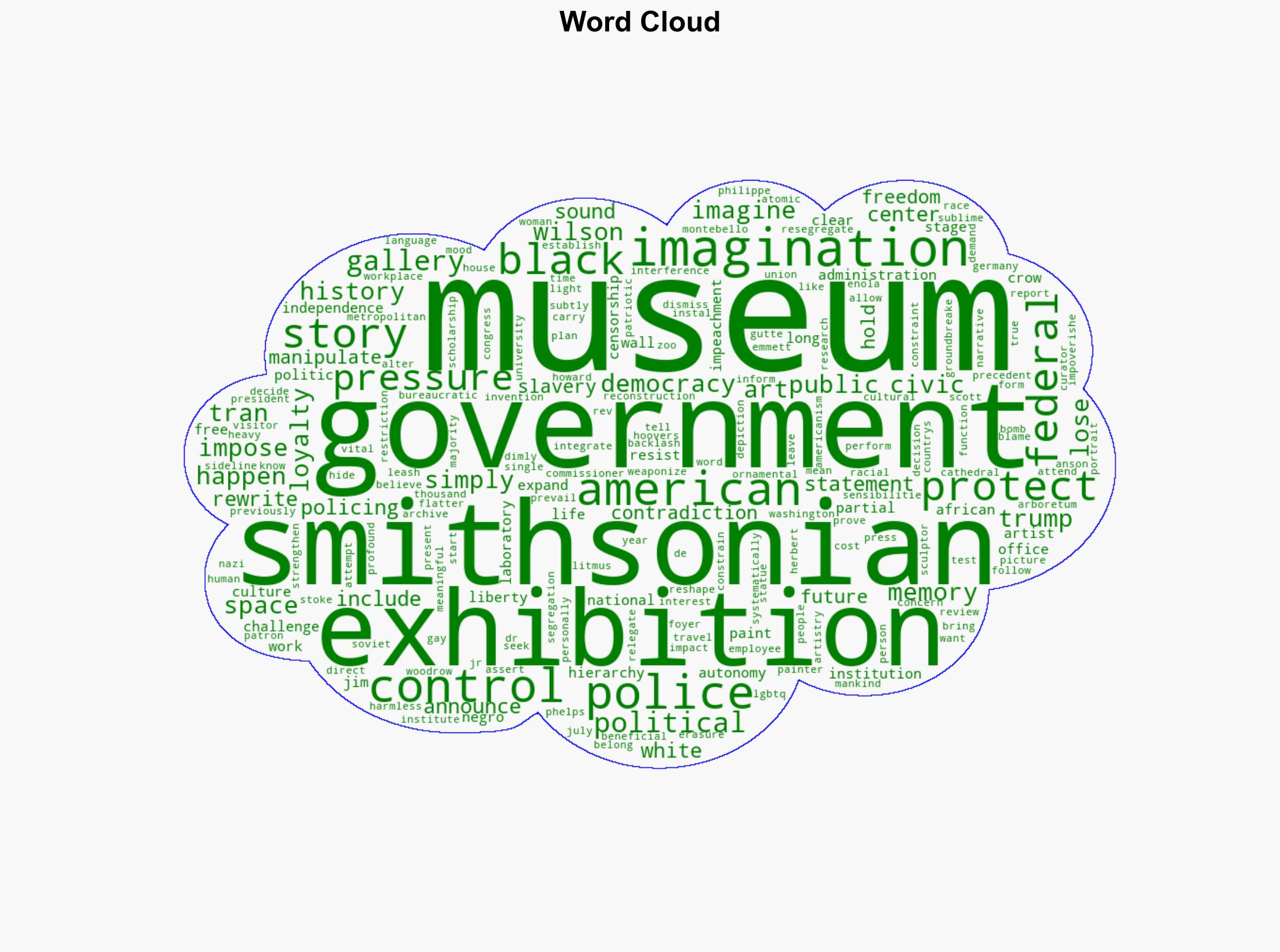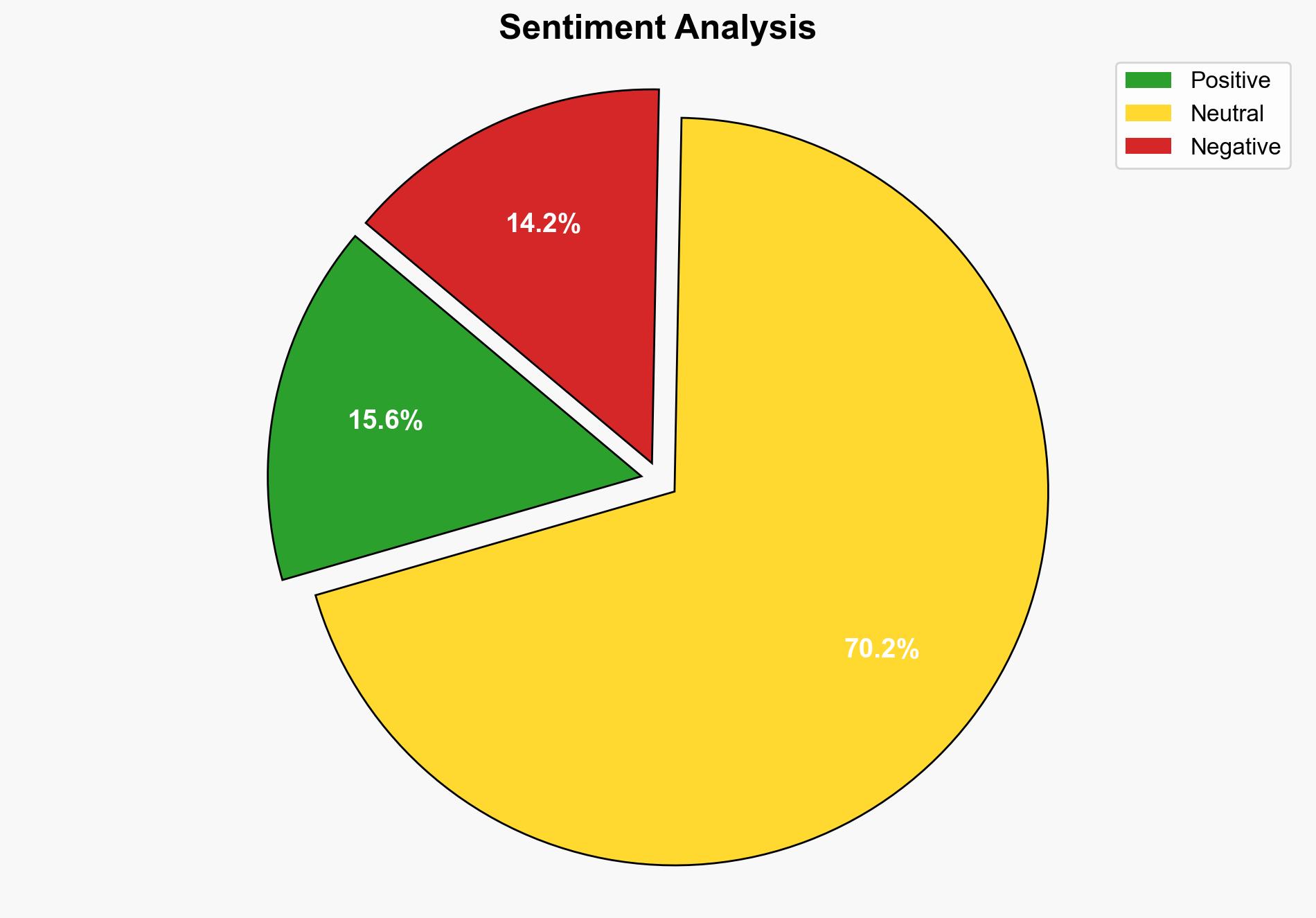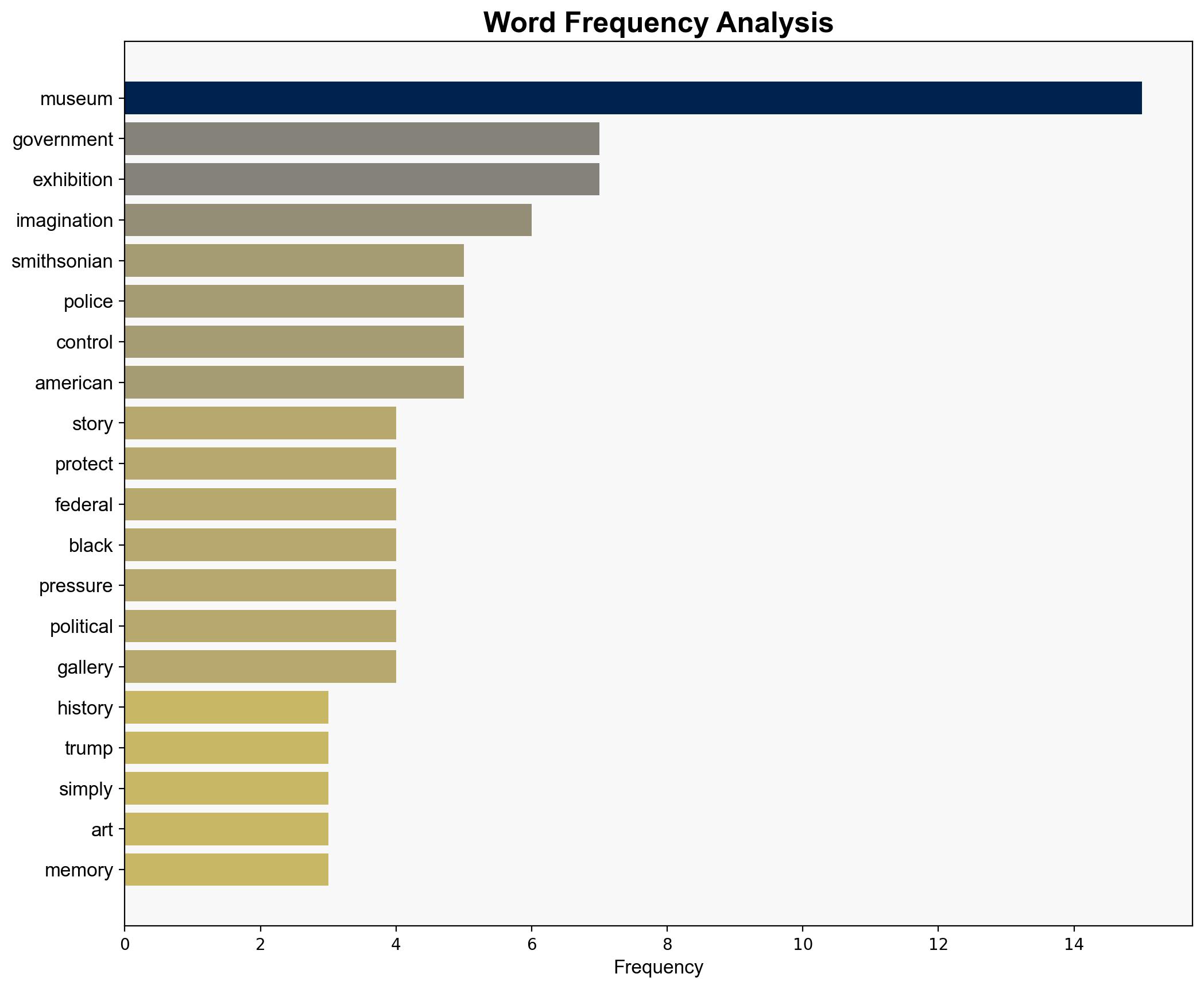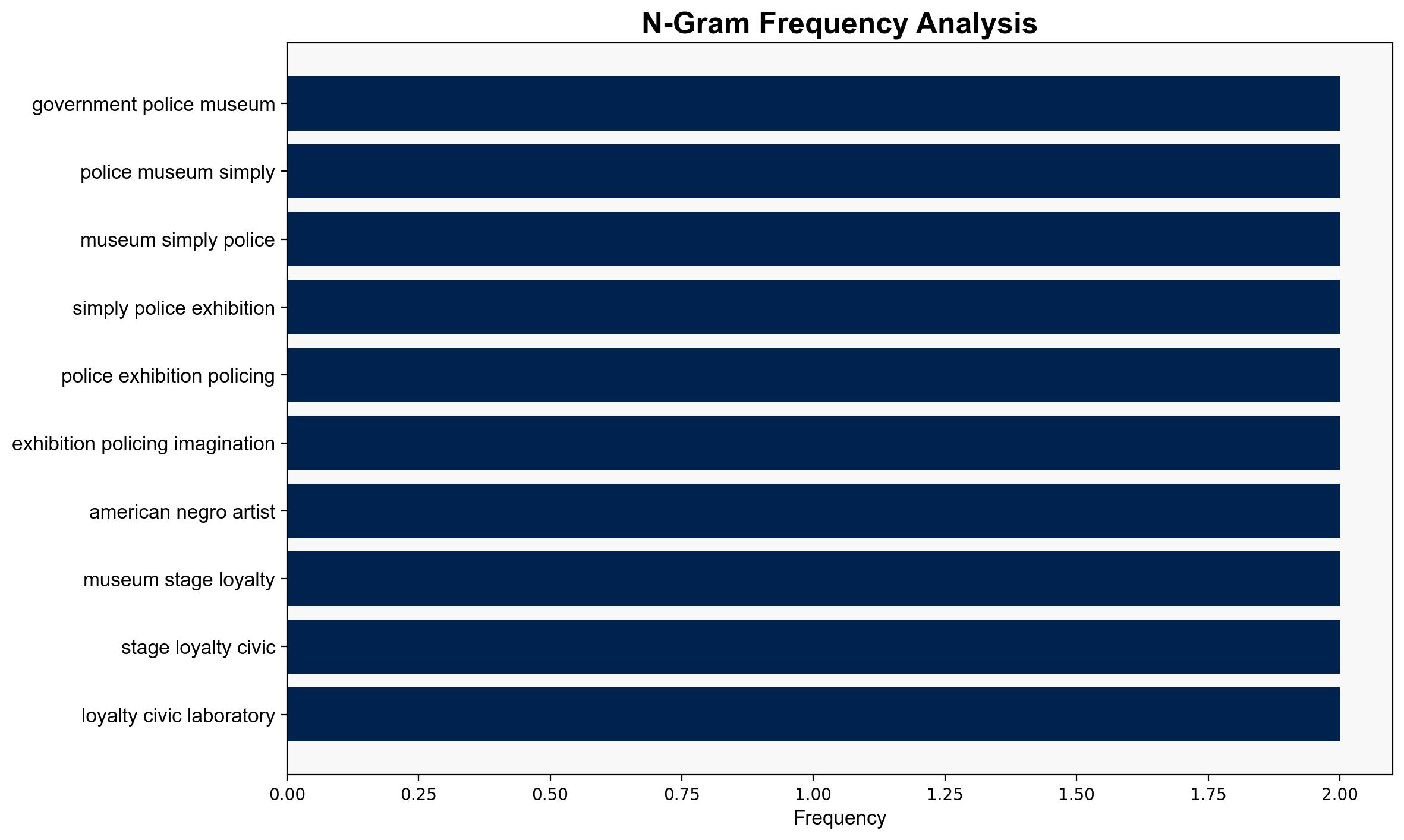I wouldnt let the Smithsonian show my work Trump keeps demonstrating why – MSNBC
Published on: 2025-08-24
Intelligence Report: I wouldn’t let the Smithsonian show my work Trump keeps demonstrating why – MSNBC
1. BLUF (Bottom Line Up Front)
The analysis suggests a moderate confidence level in the hypothesis that the current U.S. administration’s actions towards cultural institutions like the Smithsonian are part of a broader strategy to control national narratives and influence public perception. The alternative hypothesis, that these actions are routine bureaucratic adjustments, is less supported. Recommended action includes monitoring federal interactions with cultural institutions to assess potential impacts on public discourse and historical narratives.
2. Competing Hypotheses
1. **Hypothesis A**: The U.S. administration’s review of the Smithsonian is part of a strategic effort to control historical narratives and influence public perception, similar to historical precedents of governmental interference in cultural institutions.
2. **Hypothesis B**: The review is a standard bureaucratic process aimed at improving efficiency and ensuring alignment with national values, without any ulterior motives to manipulate historical narratives.
Using the Analysis of Competing Hypotheses (ACH) 2.0, Hypothesis A is better supported due to historical parallels and the specific language used in the administration’s statements, which suggests a potential agenda beyond mere bureaucratic oversight.
3. Key Assumptions and Red Flags
– **Assumptions**: Hypothesis A assumes that the administration has a vested interest in controlling cultural narratives, while Hypothesis B assumes the administration’s actions are benign and routine.
– **Red Flags**: The historical context of governmental interference in cultural institutions raises concerns about potential bias. The lack of transparency in the review process is a significant red flag.
– **Blind Spots**: Potential internal dissent within the Smithsonian or other cultural institutions is not addressed, which could impact the outcome of the review.
4. Implications and Strategic Risks
– **Cultural Impact**: If Hypothesis A is correct, there could be a significant impact on how history is presented to the public, potentially altering public perception and understanding of key historical events.
– **Political Risks**: Increased federal control over cultural narratives could lead to domestic unrest or international criticism, affecting the U.S.’s global standing.
– **Escalation Scenarios**: Continued interference could lead to protests or legal challenges from cultural and civil rights organizations.
5. Recommendations and Outlook
- Monitor federal interactions with cultural institutions for signs of narrative manipulation.
- Engage with cultural and civil rights organizations to gather insights and build coalitions to resist undue influence.
- Scenario Projections:
- Best Case: The review results in improved efficiency without altering historical narratives.
- Worst Case: Increased federal control leads to widespread censorship and public unrest.
- Most Likely: Some adjustments occur, but significant pushback limits the extent of narrative control.
6. Key Individuals and Entities
– Philippe de Montebello
– Smithsonian Institution
– U.S. Administration
7. Thematic Tags
national security threats, cultural influence, historical narratives, government oversight





